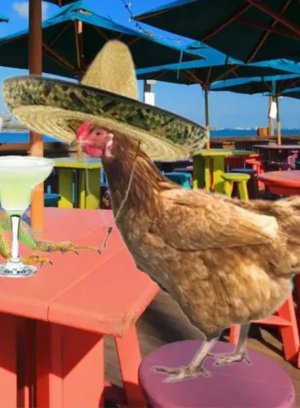flowerbug
Sustainability Master
...
Guess who is buying more freaking chickens this year?
sad,
you,
and KFC...
...
Guess who is buying more freaking chickens this year?

This is what happens when people don’t know what they are doing and breed blue and lavender together. Anything that doesn’t come out black they just call lavender, without realizing it’s just blue or splash. Very likely they had a splash rooster over lavender hens, so they didn’t get any black chicks at all. Cuz that might have clued them in that their “lavenders” weren’t “pure”.My first lavender orpingtons?
They're blue
My lavender orpington rooster?
He's splash
I sold my blue hens. Sad, because they were the sweetest birds I've ever had. I'm undecided re: splash rooster.This is what happens when people don’t know what they are doing and breed blue and lavender together. Anything that doesn’t come out black they just call lavender, without realizing it’s just blue or splash. Very likely they had a splash rooster over lavender hens, so they didn’t get any black chicks at all. Cuz that might have clued them in that their “lavenders” weren’t “pure”.
If that’s what they did, then your blue Orpingtons could be split to lavender. But with your rooster being splash, you wouldn’t be able to breed the blue out in the first generation. Not really worth the trouble to try to get the lavender gene to double up and express. If you did get a lavender chick and it also had the blue gene, I don’t know how you would be able to tell.
That’s too bad.I sold my blue hens. Sad, because they were the sweetest birds I've ever had. I'm undecided re: splash rooster.
I also spent way too much money on a blue frizzle Americauna pullet. That's a rooster too.What a mess! I won't be hatching any eggs this year.
The blue frizzle roo is the same color as my lavender orps. Are the color names different between breeds?That’s too bad.
You could totally make blue frizzle Easter Eggers with that rooster and just about any hen!
Well they shouldn’t be, but a lot of breeds use different color words to mean the same thing or use the same word for different situations. Case in point is when the lavender Ameraucanas got accepted to the APA (or maybe it was when they applied. I don’t even know if they are officially accepted) they went with self blue instead of lavender.The blue frizzle roo is the same color as my lavender orps. Are the color names different between breeds?
 Talk about confusing the layperson! Now all the people out there who aren’t up on genetics or are newbies hear the word “blue” in both varieties, they think it’s the same variety. So they breed blues to self blues (lavenders) and wonder why the offspring don’t come out right. (Or they assume they are correct and sell them as “lavenders”.) I feel like the lavender Ameraucana people shot themselves in the foot! (I think it caused huge rifts among them too.)
Talk about confusing the layperson! Now all the people out there who aren’t up on genetics or are newbies hear the word “blue” in both varieties, they think it’s the same variety. So they breed blues to self blues (lavenders) and wonder why the offspring don’t come out right. (Or they assume they are correct and sell them as “lavenders”.) I feel like the lavender Ameraucana people shot themselves in the foot! (I think it caused huge rifts among them too.)